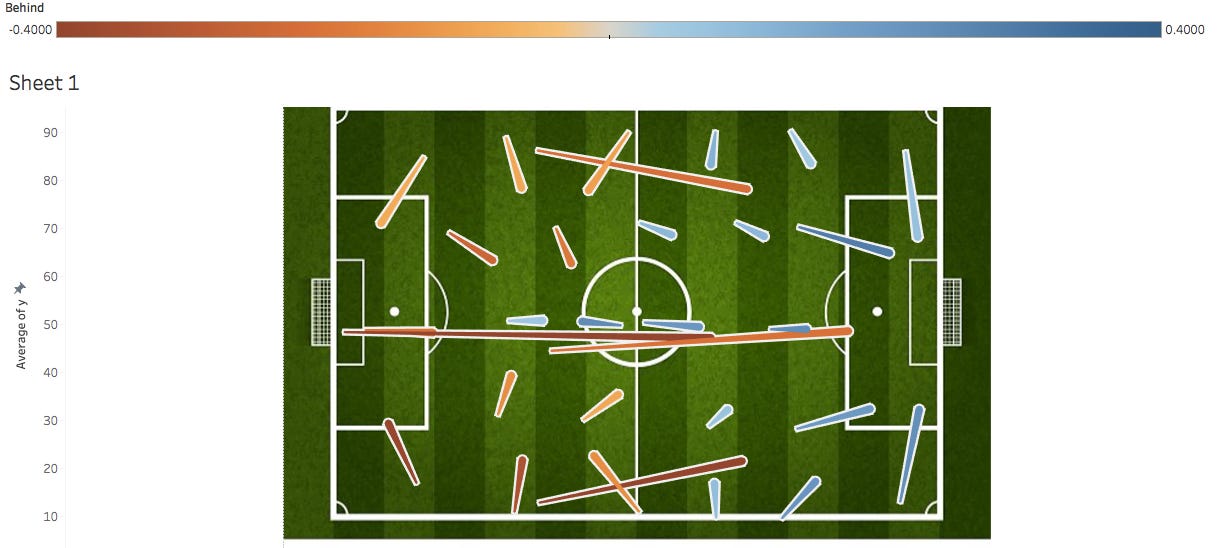Perusing World Cup Passing Data: Time and Game Effects
Before I get to hopefully future pieces on possibly: Senegal, Mexico, Mario Fernandes, Dele Alli, Thomas Muller and more we look at a bit of game state and time state effect on passing patterns in the World Cup.
A reminder, the 30 "passes" you see on each field below are just types of passes. Every pass played is assigned to one of these types of passes for the sake simplicity of analysis.
Ahead

I think this is kind of surprising. I attempted to correct for team quality here by comparing "expected passes" of a certain type when ahead/behind by looking at teams tied rates. I didn't expect long balls and own half passes to be so clearly more common when ahead.
Behind

Late/Early
The next two graphs are the same numbers plotted differently. Both represent how often passes are played early in a tied game state compared to how often they are played late. Early is minutes 1-20, late is minute 70 on.


The later the game gets, even if tied, the further forward the center of gravity gets from the perspective of the attacking team. This isn't new for me really but it's interesting to me nonetheless and gives me chance to link to own piece in past and improve 10% on what seems to be a fine viz to me but usually leaves 25% of people looking at it a bit confused. Teams pass it back in their own half a lot more at the start of games when the game is tied than they do late in games. Why do they do this?


